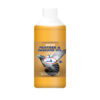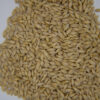
How Loft Conditions Contribute to CRD in Pigeons
How Loft Conditions Contribute to CRD in Pigeons
Chronic Respiratory Disease (CRD) is a prevalent issue among pigeon fanciers, often leading to diminished performance and health in affected birds. While pathogens like Mycoplasma gallisepticum are primary culprits, the role of loft conditions in exacerbating or even initiating CRD cannot be overstated. This article delves into how specific aspects of loft environment contribute to CRD and offers actionable steps to mitigate these risks.
Understanding CRD: More Than Just an Infection
CRD is a complex condition typically caused by a bacterial infection, most often Mycoplasma gallisepticum. However, it’s rarely a single-pathogen issue. CRD in pigeons is usually the result of co-infections involving viruses (like paramyxovirus), fungi (such as Aspergillus), or other bacteria (like E. coli or Chlamydia psittaci).
Environmental factors, particularly loft conditions, play a significant role in the onset and progression of CRD. Poor air quality, high humidity, and inadequate ventilation can compromise the pigeon’s respiratory system, making them more susceptible to infections.
The Impact of Loft Conditions on Respiratory Health
1. Ammonia Buildup
Ammonia is produced when uric acid from pigeon droppings breaks down. In a poorly ventilated loft, it builds up fast—especially in damp bedding or humid conditions. Even at low levels, ammonia can irritate the eyes, nose, and throat, break down the mucosal barrier in the respiratory tract, suppress the immune system, and make pigeons more vulnerable to bacterial and viral infections.
2. Dust and Particulate Matter
Dust from feathers, feed, and bedding materials can accumulate in the loft. Inhalation of these particles can irritate the respiratory tract, leading to inflammation and increased susceptibility to infections. Dusty environments also facilitate the growth of fungi like Aspergillus, which can cause aspergillosis—a severe respiratory disease in pigeons.
3. Poor Ventilation
Proper airflow is crucial in maintaining a healthy loft environment. Inadequate ventilation leads to the accumulation of harmful gases like ammonia and carbon dioxide, as well as increased humidity levels. This creates an ideal environment for pathogens to thrive and compromises the pigeon’s respiratory health. Effective ventilation should ensure constant airflow without causing drafts.
4. High Humidity Levels
Humidity levels above 65% can promote the growth of mold and bacteria in the loft. Moist environments also hinder the drying of droppings and bedding, leading to increased ammonia production. Monitoring and maintaining optimal humidity levels are essential in preventing respiratory issues.
Early detection of CRD is vital for effective treatment. Common symptoms include:
-
Labored or open-mouth breathing
-
Coughing or wheezing
-
Watery or swollen eyes
-
Nasal discharge
-
Reduced flight stamina
-
Ruffled feathers or droopy posture
-
Birds avoiding certain areas of the loft
These signs indicate compromised respiratory health and should prompt immediate evaluation of loft conditions.
Strategies to Optimize Loft Conditions
1. Enhance Ventilation
Implement a ventilation system that allows for continuous airflow without creating drafts. Openings high and low on opposite sides of the loft facilitate the escape of stale air and the influx of fresh air.
2. Regular Cleaning
Daily removal of droppings, especially under perches and nesting boxes, prevents ammonia buildup. Weekly deep cleaning, including disinfection, helps eliminate pathogens and reduces dust accumulation.
3. Use Absorbent Bedding
Materials like wood pellets, zeolite, Loft white or dry peat moss are effective in trapping moisture, thereby reducing ammonia production and maintaining a drier environment.
4. Monitor Humidity and Temperature
Utilize hygrometers and thermometers to keep track of loft conditions. Aim for humidity levels below 65% and maintain a comfortable temperature range to inhibit pathogen growth.
Design the loft to mimic a chimney effect, where warm air rises and exits through upper vents, drawing in cooler air from lower vents. This natural airflow pattern helps maintain optimal air quality.
Conclusion
Loft conditions play a pivotal role in the respiratory health of pigeons. By understanding and addressing factors like ammonia buildup, dust accumulation, poor ventilation, and high humidity, pigeon fanciers can significantly reduce the risk of CRD. Regular monitoring and maintenance of the loft environment are essential steps in ensuring the well-being and performance of your birds.


